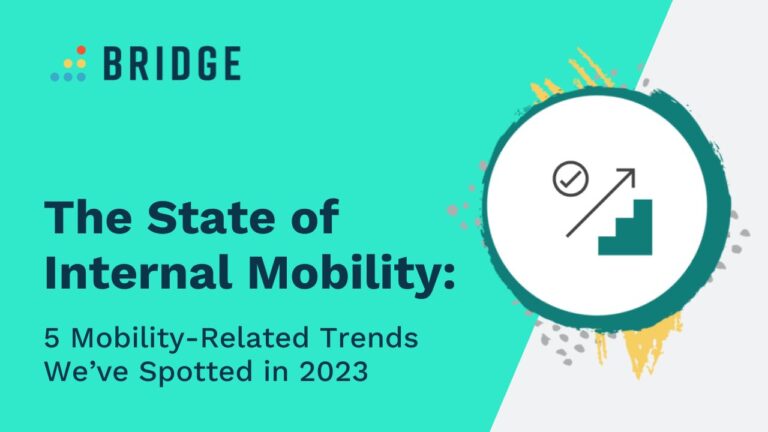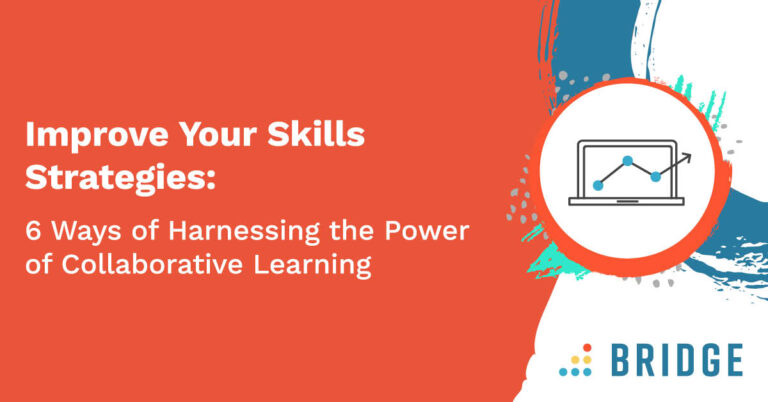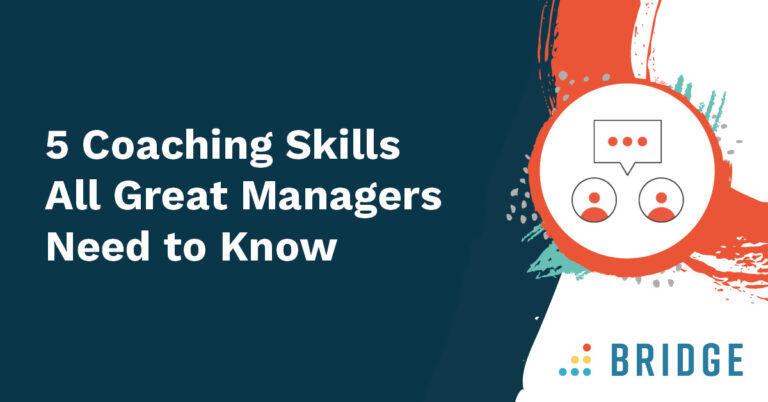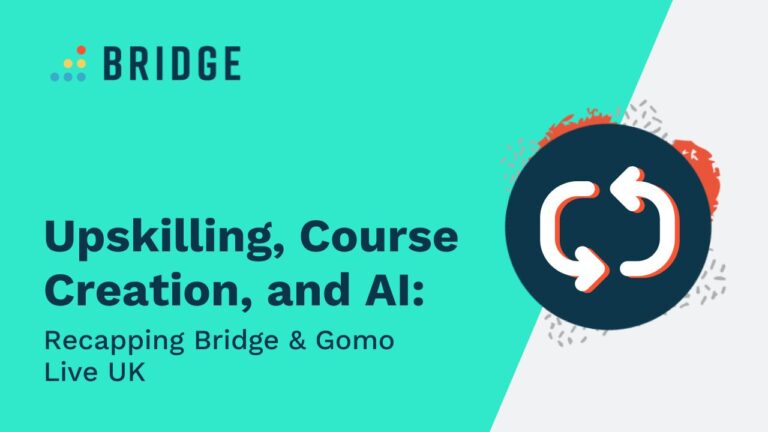The need for internal mobility is evergreen. Whether you’re looking to retain your brightest talent, cut down on recruitment costs, or provide your people with an extra dose of purpose, it’s always been handy to facilitate employee movement within your organization. These benefits have only grown in line with the sophistication of today’s skill development strategies and upskilling platforms, which make it easy to develop existing employees with a view to filling those key vacancies.
That being said, the technological advances that are coming to define 2023 have made the case for internal mobility stronger than ever. As artificial intelligence reaches new heights of promise and complexity, many organizations are entering uncharted territory, facing a need for skills that haven’t previously been required and job roles that may never have existed before.
In the face of the new and the uncertain, the only answer is agility. Organizations need to respond to industry-changing events and advances with the confidence that comes hand-in-hand with knowing they can grow their talent in the right direction. This is the best way to develop new skills and encourage your people to fill skills gaps—even if the gaps are in areas that didn’t exist until very recently.
This blog post tackles five trends we’ve noticed in the first half of 2023, encompassing internal mobility itself, the practices that facilitate it, and the telltale signs that upward and lateral employee movement remains essential.
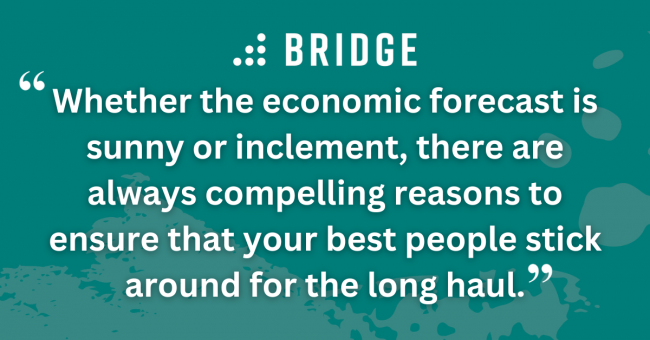
Trend #1
New Research Is Fleshing Out the Relationship Between Internal Mobility and Employee Retention
There’s always been a fundamental link between talent mobility and higher rates of employee retention. If you put aside the broader strategic goals of a good mobility program, like filling skills gaps or enacting succession plans, you’re left with a powerful incentive for a given employee to remain within their current organization. That’s the root of internal mobility: it’s a way to retain your best workers even (and especially) when those workers want to progress their careers by taking a new position.
While the mobility-retention relationship may be intuitive, it’s always worth noting when this kind of principle receives extra attention—which 2023 has provided in the form of data from LinkedIn. According to LinkedIn’s 2023 Workplace Learning report, employees who have made an internal move by the end of their second year with a company have a 75% likelihood of staying. This is a healthy jump when compared with the 56% likelihood to stay among employees who remained in the same position.
Despite the obvious retention-related advantages that accompany internal mobility, LinkedIn’s data suggests that many organizations have been slow to embrace mobility practices. In fact, only 15% of its respondents reported that their organization encouraged them to move to a new role over a six-month period. With high-profile entities like LinkedIn showcasing the strong connection between mobility and retention, it’s not unreasonable to anticipate increased interest in formalized internal mobility programs.
After all, whether the economic forecast is sunny or inclement, there are always compelling reasons to ensure that your best people stick around for the long haul.
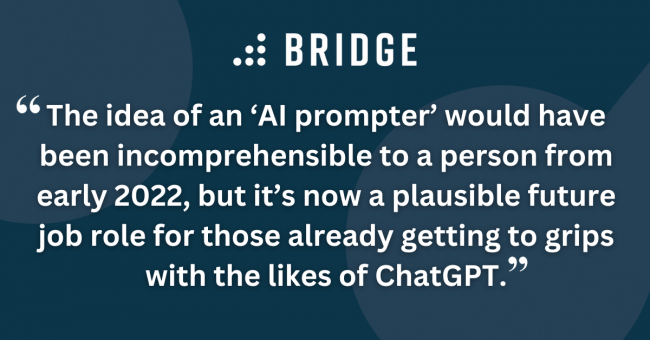
Trend #2
AI Advances, New Technologies, and Fresh Considerations Are Incentivizing Mobility
It’s hard to discuss the ongoing trends of 2023 without touching on artificial intelligence. We’ve encountered plenty of opinions on the exciting world of generative AI during the course of the year’s industry events (and even contributed a few of our own!), and it’s striking that AI—alongside other future-facing concepts—has set the stage for a greater emphasis on internal mobility moving forward.
At Learning Technologies 2023, for example, there was plenty of speculation about the job roles of tomorrow, with an emphasis on positions that don’t exist yet. The idea of an ‘AI prompter’ would have been incomprehensible to a person from early 2022, but it’s now a plausible future job role for those already getting to grips with the likes of ChatGPT. Similarly, new levels of climate consciousness might pave the way for roles like ‘climate auditor’.
In either case, these predictions are built on the idea that nobody currently has the experience to fill these positions as they become necessary—because they don’t exist yet. In that light, a culture of internal mobility, in which employees continuously expand their skills and capabilities in preparation for internal moves, looks like a fantastic way to ensure that organizations can quickly rise to the challenge of filling unprecedented roles.
This process of continuous improvement and upskilling to meet the skill requirements of brand-new roles will be made easier with the right tools. If you want to keep up with new jobs related to a rapidly evolving technology like AI, you’ll benefit from AI-powered tools capable of keeping up with those developments. A good skills platform will, for example, be able to swiftly identify (and help you fill) the inevitable skills gaps that come hand-in-hand with an unknown and exciting future.
TAKE A DEEPER DIVE WITH OUR EBOOK | ‘How AI Can Power Talent Management’
Trend #3
The Popularity of Mentorship for Career Development Is Growing
In light of the new technologies fuelling the next generation of jobs, it’s never been more essential to share the relevant expertise your organization already holds—especially if it’s locked inside the heads of your most skilled and knowledgeable employees. Finding ways to foster knowledge sharing is a great way to cultivate organizational agility and ensure your people are qualified to make the right internal moves.
As such, it’s no surprise that we’re seeing a rise in mentorship opportunities. According to a survey conducted by the Top Employers Institute, respondents who report consistently offering mentoring for career and employee development jumped by 10 points between 2021 and 2023.
This modest but noteworthy uptick in mentorship practices points to a tacit recognition of the need for internal mobility. Mentorship is all about giving employees a taste of roles within your organization that —with the right guidance—could one day be theirs.
MORE ABOUT MENTORSHIP | ‘How Org Charts Can Help Workplace Mentorship Programs’
Trend #4
Skills Mapping Is Essential for Filling Roles Correctly
While LinkedIn’s research points to the benefits of internal mobility, and while AI developments signpost the value of mobility for future job requirements, McKinsey’s State of Organizations 2023 offers insights into the current need for better mobility practices. The report’s conclusions are drawn from a wide range of data, from its 2023 survey, to studies encompassing the past decade. Amid this comprehensive mix of insights, it’s striking that McKinsey’s list of ten “most significant shifts facing organizations today” includes the well-established fact that 20-30% of critical roles haven’t historically been filled by the most appropriate people for the job.
That’s already a striking proportion of a given organization’s roles in itself, and the magnitude of this problem is hammered home by McKinsey’s follow-up observation that the highest performers in a role can be 800% more productive than merely average performers.
Clearly, organizations need to sharpen up their abilities to place the right people in the right positions. Moving existing employees into vacancies is a part of that process—especially when those moves are informed by robust skills mapping. By taking a detailed inventory of your employees’ skillsets and cross-referencing them with the skill requirements of your open positions, it becomes a simple matter to make sure each and every internal candidate is perfectly suited to their role. By looking at internal candidate pools, you can be sure that your ‘new’ hire already knows your organization’s processes, culture, and idiosyncrasies.
When there are 800% productivity increases on the line, the need for skills mapping (and the internal mobility that follows!) has never been more pronounced.
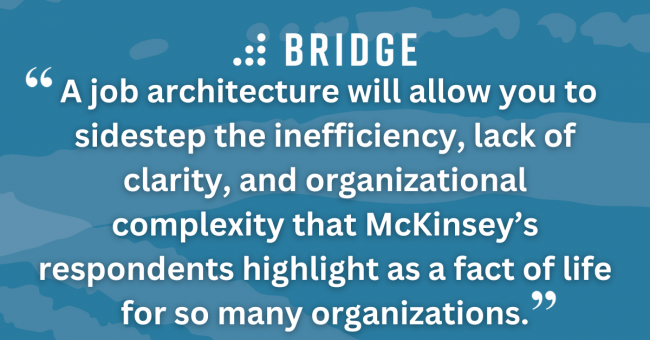
Trend #5
Unclear Job Roles Are Making the Case for Job Architectures
Skills mapping can absolutely help you place the right people in the right roles—provided you’re able to articulate what each of your vacant positions entails. This might sound like common sense (and it is), but the same McKinsey report suggests that it’s not always easy to clearly define job roles and the responsibilities that come with them.
40% of the respondents McKinsey surveyed in 2023 said that unclear roles and responsibilities were a cause of inefficiency in their organizations. The same proportion suggested that inefficiency was the result of “complex organizational structures.” The implication here is clear: some organizations aren’t clarifying the precise scope, demands, and hierarchical positions of their job roles. This isn’t just a cause of the inefficiencies described by McKinsey’s respondents—it also represents a barrier to internal mobility by making it difficult for employees to navigate from one role to the next.
In other words, more organizations should be looking to take job architectures seriously in 2023. A good job architecture will allow you to standardize your job titles, job descriptions, job levels, and job families. This framework helps you to articulate exactly what you expect from the holders of each role and define each role in relation to positions with overlapping skill requirements. It’ll also offer your people a firm sense of where they stand within your organization’s hierarchy.
As a result, a job architecture will allow you to sidestep the inefficiency, lack of clarity, and organizational complexity that McKinsey’s respondents highlight as a fact of life for so many organizations. With a clear architecture in place, you’ll be even better placed to move your internal candidates into exactly the right positions, secure in the knowledge that they’ll have the skills for the job—if only because you’ll know what the job involves.
INTRIGUED? KEEP READING | ‘How to Build a Job Architecture With AI-Assisted Skills Matching’
Ready to Fill Those Skills Gaps?
Bridge’s AI-powered skills platform, Skills Plus, puts your people on the path to the best upskilling and reskilling opportunities by suggesting the right skills for their profession and industry—and recommending the learning content that will get them where they need to be. Develop skill taxonomies based on the latest needs for your organization with the help of sophisticated skills-based automation.
